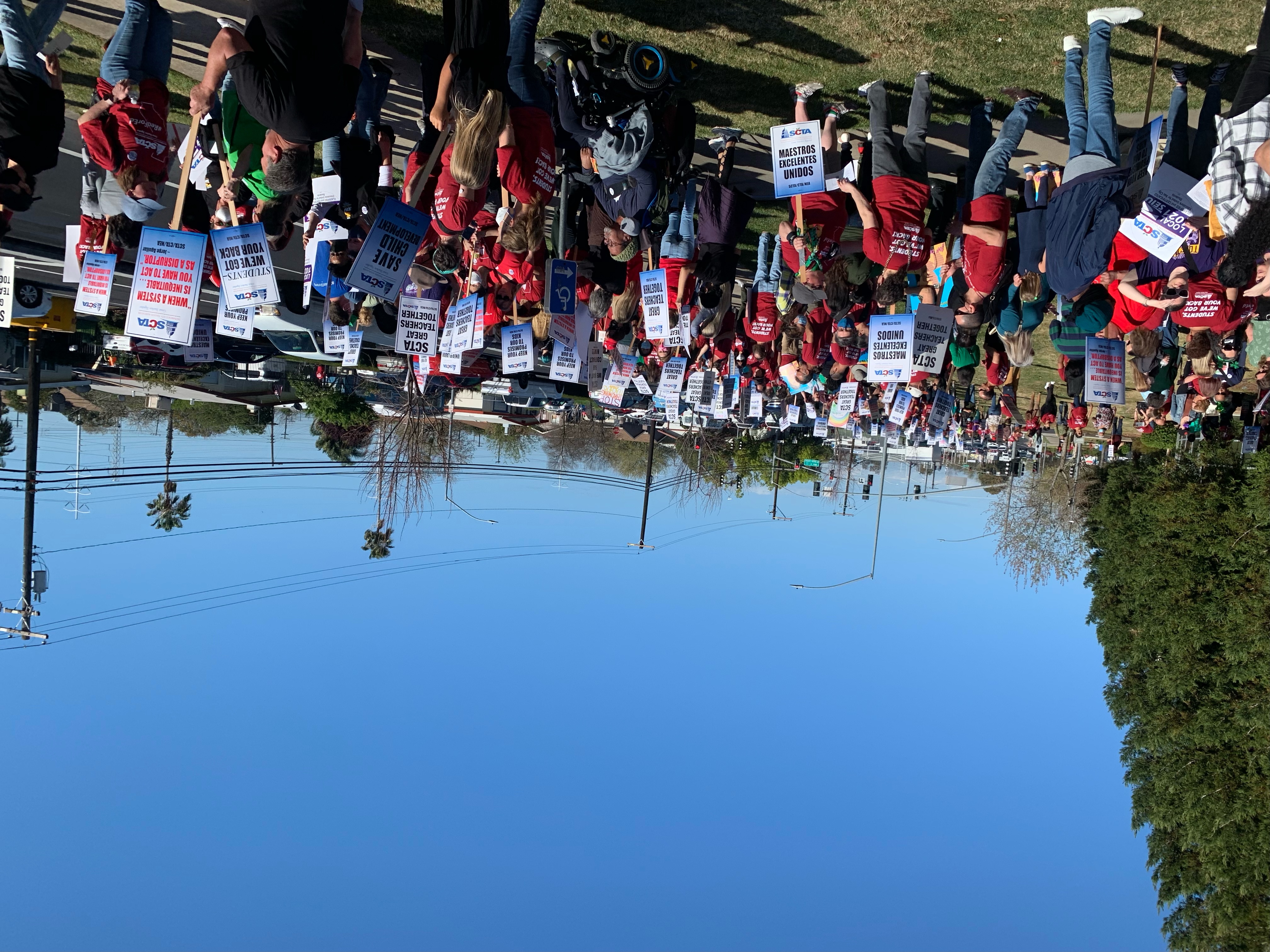
By Eleanor Love, News and Sports Editor and Izzie Kim, Editor-in-Chief
On Wednesday, March 23, Sacramento City Unified School District (SCUSD) teachers and staff officially took to the picket line. Many wore red and hoisted posters and signs as they marched up and down the street in front of their schools.
Later that morning, they relocated to gather outside of the Serna Center. Hundreds of teachers and staff walked along the street, and others collected in the parking lot. Students, families, and community members showed up as well. Passing cars honked in support while strikers played music, shook cow bells, and chanted.
The strike was a culmination of disagreements between the Sacramento City Teachers Association (SCTA) and SCUSD. Teachers and staff say they’re angry over a staffing crisis and the district’s proposed changes to their contract (which include benefit cuts, wage cuts, and wage freezes). The Service Employees International Union (SEIU), which represents all non-teacher staff, went on strike with the SCTA.
“There is no reason that the strike needed to happen. The district had days to come to the table to work with us and the SEIU to resolve these problems,” said Nikki Milevsky, Vice President of the SCTA.

On March 17, an independent fact finder’s report was released as a result of a fact finding process requested by the district in December 2021. The process sought to help resolve issues between the two parties. The fact finder’s recommendations largely supported the SCTA’s stances, and the SCTA quickly concurred with the recommendations. The district did not concur, and after negotiations on Monday and Tuesday, no agreement was met.
“We assumed they would concur with the report they asked to have happen, and they did not. They dissented and refused to accept their fact finder’s report,” Milevsky explained.
Milevsky and other union leadership also highlighted that 10,000 students in the district have had an uncertified instructor leading their classes for at least part of the 2021-2022 school year. SCUSD’s official website reports that over 40,000 students attend SCUSD schools – if both of these numbers are accurate, about a quarter of students have experienced this.
In an interview conducted by local news station ABC10, SCUSD Superintendent Jorge Aguilar explained “This is certainly not something that’s ideal for our community and I recognize it and I just hope that we can bring back our students.”
The Prospector also requested comment from SCUSD officials at the Serna Center, but none were available at the site.
Standing on a makeshift stage in the parking lot of the Serna Center, surrounded by union leadership as well as students, SCTA President David Fisher rallied the crowd: “We didn’t choose this fight. But we’re gonna finish it,” he said.
Many chants from the crowd centered around Aguilar’s recent pay raises: a 34,000-dollar raise in March 2020 and an increase in benefits in December 2021.
“He should be taking a pay cut, not you,” said Fisher.

On Tuesday, March 22, the United Professional Educators (UPE), which represents school administrators, issued a pages-long letter to Aguilar and Board of Education members. “We have lost confidence in the District’s ability to provide effective leadership,” it reads.
UPE’s indication of no confidence is in addition to SCTA and SEIU’s votes of no confidence.
Members from the National Education Association (NEA) and California Teachers Association (CTA) also offered support to teachers and staff.
NEA Vice President Princess Moss joined the stage today, asserting that “Teachers and educators must unite because public education is a human right. When public education is under attack, we must stand up and fight back.”
“What the union is asking for really isn’t extraordinary. The district has these funds from the American Rescue Plan and the governor,” Moss said.
Teachers and staff plan to continue their strike. Wednesday evening, C.K. McClatchy Principal Andrea Egan sent out an email to parents and students stating that schools will be closed again on Thursday and for the duration of the strike. Meals will be available for pickup at the school from 11 a.m. to 1:30 p.m.
Tomorrow, after striking at their respective schools from 8 to 10 a.m., teachers and staff intend to gather outside of the Sacramento County Office of Education. On Friday, they plan to march in front of Sacramento City Hall and Cesar Chavez Plaza.



